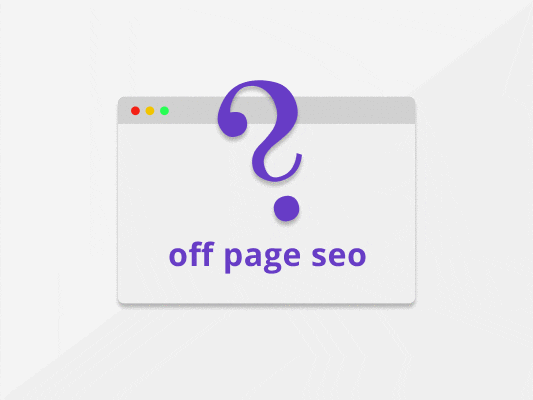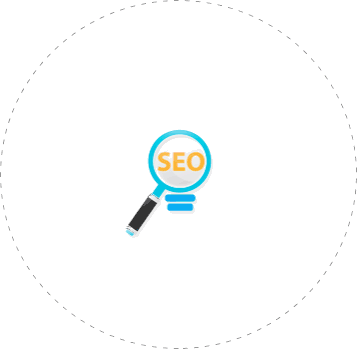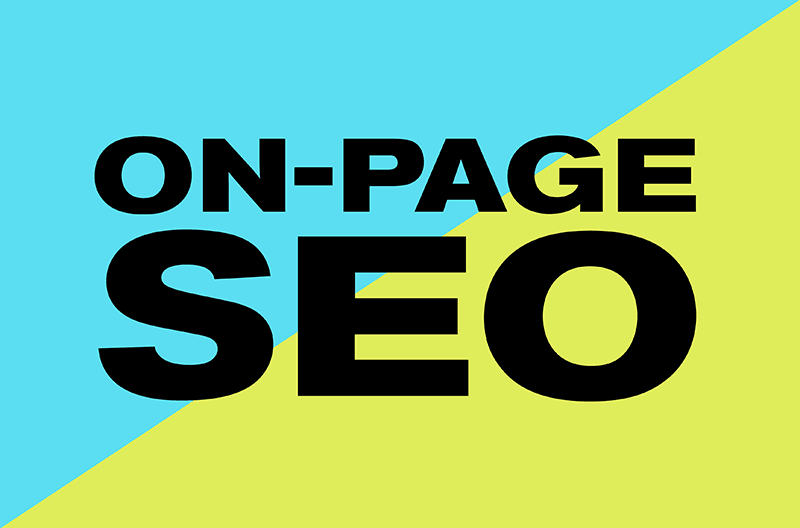SEO Audit: Most Advanced SEO Audit Checklist
Having trouble ascending Google’s ranks? This is a common predicament. SEO might appear as a complex puzzle for numerous small-scale business owners, prompting questions about where to start or how to significantly impact the rankings.
It feels like targeting a continuously shifting goal with the regulations altering consistently.
We’ve walked in those shoes ourselves – manoeuvring through SEO’s convolutions, immersing ourselves in contemporary strategies and techniques to identify what indeed boosts search visibility.
Here’s an enlightening statistic: organic search fuels 53% of all website traffic. Recognising the significance of SEO is paramount for anyone aspiring to broaden their digital presence with the consequence of this, our diligent research has equipped us with knowledge for an advanced SEO audit checklist prepared for 2024—exclusively for you.
This guide will assist you in performing a comprehensive SEO audit, ensuring every detail is examined, thus laying the groundwork for your success in the highly competitive digital marketing arena—from technical modifications and content improvements to off-site strategies that strengthen authority and trust with preeminent search engines like Google.
Prepared to enhance your rankings?
Key Takeaways
- SEO stands for search engine optimisation, which makes websites easy to find on Google and attracts more visitors.
- The advanced SEO audit checklist for 2024 includes technical optimisations like improving website speed and security, content refinements such as using keywords in title tags, and off-site strategies like link building.
- Using white hat techniques is key for long-term success in SEO. These methods follow search engine guidelines and focus on providing quality content to users.
- Learning resources like the Moz Academy SEO Essentials Certification help small business owners understand how to improve their site’s visibility on search engines.
- Regular maintenance through tools such as Google Analytics is crucial for keeping a website performing well in search rankings.
What is SEO and Why is it Important?
SEO stands for search engine optimisation. It’s all about making your website easy to find on Google and other big internet sites. This matters because when people can find your site easily, you get more visitors.
More visitors mean more chances to show what you offer or sell. Think of SEO like putting up a big sign for an online shop – it guides customers right to your door.
Understanding the basics of search engine optimisation
Understanding the basics of search engine optimisation, or SEO, is crucial for us to increase the visibility of our websites in Google’s search results. We know that 53% of all website traffic comes from organic searches.
This means making sure our sites appear high up on those pages is essential for drawing more visitors. SEO involves tweaking your site so it ranks better on Google and other engines.
 At the heart of doing well in search rankings are relevance, quality, and authority. Search engines use complex algorithms to decide which pages show up first for any given query. These algorithms take into account how relevant a page’s content is to the searcher’s query, how good the quality of the content is – such as whether it provides valuable information – and how authoritative the site is compared with others on similar topics.
At the heart of doing well in search rankings are relevance, quality, and authority. Search engines use complex algorithms to decide which pages show up first for any given query. These algorithms take into account how relevant a page’s content is to the searcher’s query, how good the quality of the content is – such as whether it provides valuable information – and how authoritative the site is compared with others on similar topics.
To stay ahead, we keep an eye on evolving search engine guidelines and update our strategies accordingly. Using keywords appropriately in titles and meta descriptions helps crawlers understand what our pages are about.
Building backlinks from reputable sources increases our site’s authority by showing that others value our content enough to link to it. Ultimately, understanding these elements enables small business owners like us to enhance website development effectively within digital marketing efforts.
Relationship with search engines like Google
Our journey with search engines, predominantly Google, influences how we introduce our websites globally. Since 2015, Google has emphasised mobile usability. This modification compelled us to reconsider our strategy for creating sites that function excellently on both desktops and mobile devices.
Given the extensive smartphone usage for internet access, it is understandable why this transition was essential.
 But Google’s enhancements are ongoing. In October 2019, they initiated the usage of BERT models to comprehend English language queries in the US more effectively. This progress motivated us to polish our content, making it more naturally answer questions and align effectively with what users are querying.
But Google’s enhancements are ongoing. In October 2019, they initiated the usage of BERT models to comprehend English language queries in the US more effectively. This progress motivated us to polish our content, making it more naturally answer questions and align effectively with what users are querying.
We monitor these trends as they directly impact our web pages’ visibility in search results. By adapting to Google’s focus on aspects such as mobile-friendliness and local searches, we have a greater opportunity to rise in the rankings.
The following topic – gaining proficiency in technical optimisation in SEO.
Types of SEO and How it Works
SEO breaks down into a few key areas, each vital for getting your website to the top. It starts with making sure everything on your site works perfectly and ends with showing the world you’re a trusted source.
Technical optimisation
Getting your website to rank well on Google is pivotal for success. Through technical optimisation, we focus on enhancing websites’ speed, security and comprehensibility for search engines. Here’s our approach:
- Boost website speed – If a page takes excessive time to load, people will abandon it. We compress images and utilise caching to speed up our sites.
- Ensure site mobility – More individuals browse using mobiles now. We assure that websites look pleasant and function flawlessly on any gadget.
- Upgrade to HTTPS – Security is essential for both visitors and search engines. Transitioning from HTTP to HTTPS safeguards everyone’s data.
- Streamline URL structure – Precise and succinct URLs aid search engines in understanding the content of a page. We maintain readability by incorporating relevant keywords.
- Refine site structure – An orderly website assists users and search engine spiders in simplifying content search. We organise navigation logically.
- Concentrate on internal linking – Connections between pages indicate content relevance and distribute page authority across the site.
- Bolster crawlability – Ensuring that web crawlers can inspect our site without issues is crucial for indexing. We routinely inspect the robots.txt file and sitemap.
- Avoid intrusive interstitials – Pop-ups can annoy visitors and might negatively affect rankings. We apply them judiciously or abstain altogether.
- Resolve server and hosting issues – Speedy, reliable hosting eliminates downtime and sluggish loading times.
- Assess core web vitals – Google utilises metrics such as loading performance, engagement, and visual stability to rank sites.
Our active involvement has shown us that these steps are vital for websites to form beneficial relationships with search engines like Google, Baidu, or Bing. Through consistent monitoring of the web, we’ve witnessed how alterations in technical SEO can alter a site’s visibility in search results nearly instantly.
The use of SEO tools like Moz Academy SEO Essentials Certification provides us with an advantage, revealing deeper insights into potential website design flaws that could affect user experience negatively.
In addressing technical optimisation, we are constantly updating our knowledge — from the latest updates on Search Engine Land or direct responses through Google’s Search Console.
Each minor adjustment is part of a larger function — forming a cohesive digital marketing strategy featuring keyword research and pay-per-click advertising via platforms like Google Ads.
If you’re a small business owner planning for 2024, understanding these technical SEO elements isn’t just about keeping pace; it’s about taking the lead in a challenge where the rules and technology update rapidly.
 Content optimisation
Content optimisation
Content refinement is vital for us to make our webpages more desirable to search engines and users alike. It includes adjusting various components like title tags, meta descriptions, and headers to increase visibility and engagement.
Here’s our approach:
- Prioritise title tags—they’re the headlines that appear in search results. We ensure they’re informative and incorporate main keywords to draw attention from our target audience.
- Meta descriptions follow. These brief paragraphs below the title tag in search results offer a glimpse of our page content. We create them to be enticing, utilising pertinent keywords so users want to click through.
- Headers are important as well. Structuring content into readable sections with H1/H2 headings aids Google in comprehending and ranking our pages better. Plus, it keeps the readers satisfied as the text is more digestible.
- Remember to consider image alt text. Adding captions to images doesn’t only make our site accessible but also informs search bots about the content of the images, assisting in image searches.
- Open graph and Twitter Cards metadata are undercover agents that promote shareability on social platforms like Facebook and Twitter by showcasing previews of our content accurately.
- URL structures are important too—they should be straightforward, readable, and incorporate keywords if feasible, making them amicable for both users and search engines.
- Our content bodies should offer rich, top-notch information that meets our readers’ enquiries or demands while skillfully integrating keyword phrases without excess.
- Aligning with our keyword strategy is crucial; we verify that our written content aligns with what our target audience is browsing for on the internet.
- An ongoing audit process enables us to identify areas where content can be improved or removed if it’s low-standard or duplicated elsewhere online.
- Utilising resources like the Moz Academy SEO Essentials Certification offers us an understanding of our performance and areas for enhancement.
Off-site optimisation
After refining our content, we transition our attention to off-site optimisation. This step is vital for small business owners like us because it aids Google and other search engines in recognising our site as credible and authoritative. Here’s our method:
- Link building resides at the centre of off-site optimisation. Over half of a page’s ranking results are derived from this practice. We connect with pertinent businesses and blogs to acquire quality links back to our site.
- Brand building harmoniously coexists with off-site SEO. We utilise social media marketing to establish a prominent brand presence online, ensuring our business is noticeable.
- Public relations (PR) initiatives assist us in securing mentions in news outlets and popular blogs, directing traffic back to our site and enhancing credibility.
- The regular creation of superior content inspires others to link back to us, be it captivating blog posts or enlightening videos.
- Engagement in social media marketing on platforms like Instagram grants us a direct line to our audience, boosting visibility and naturally attracting inbound links.
- Listing management guarantees our business is accurately represented on directories and local listings, essential for local search engine optimisation.
- Aiming for positive ratings and reviews improves our reputation and influences SEO by signifying trustworthiness to search engines.
- Proactive involvement in industry-related forums can assist in driving traffic back to our website while positioning us as authorities in the sector.
- Consistent updates of sitemaps ensure search engines can crawl our website efficiently, indirectly aiding off-site optimisation by keeping our site contents up-to-date in their indexes.
- Lastly, monitoring nofollow links assists us in comprehending which incoming links do not pass SEO value but may still bring valuable traffic and visibility.
Ongoing maintenance and analysis
Keeping your website in top shape is like giving it a regular health check. We make sure nothing goes wrong and everything runs smoothly. Here’s how we do it:
- We keep an eye on traffic with tools like Google Analytics. This helps us spot any drops or unusual changes.
- Our team checks for slow pages using tools that measure site speed. Fast sites keep users happy.
- Broken links are a big no-no for us — we use software to find and fix them so visitors don’t get lost.
- Website downtime is bad for business, so we monitor our site round the clock to prevent it.
- We use data from our website analytics to make smart decisions, tweaking things to improve performance.
- Regularly updating content keeps our site fresh and Google happy, pushing us up in search rankings.
- We know Google uses clicks for ranking, so we look at which pages get the most clicks and try to understand why.
8arguablyRankBrain by Google measures how users interact with our site; understanding this helps us match their search intent better.
- Checking how our pages are rendered by Google ensures we’re seen correctly in search results.
- Keeping up with Core Web Vitals means our website loads quickly, is interactive, and looks stable on any device.
We’re always on the ball with SEO maintenance and analysis, making sure our small business stays ahead of the curve.
 Differences between white hat and black hat techniques
Differences between white hat and black hat techniques
After examining the ongoing maintenance and analysis of SEO strategy, it is essential to focus on the ethical perspective that differentiates white hat from black hat techniques. Understanding these differences ensures alignment with search engine guidelines and protects the long-term success of your online presence. We present these distinctions simply and clearly, with a focus on assisting small business owners in applying SEO with integrity.
| Aspect | White Hat Techniques | Black Hat Techniques |
| Focus | Prioritises user experience and content quality | Prioritises search engine rankings at the expense of user experience |
| Compliance | Complies with search engine guidelines | Violates search engine guidelines |
| Techniques | Creating high-quality content, obtaining natural backlinks, optimising website performance | Keyword stuffing, cloaking, buying links |
| Results | Long-term, sustainable results | Short-term gains, followed by penalties and long-term damage |
Using white hat techniques is similar to cultivating a garden—it requires patience, attention, and compliance with nature’s principles to eventually achieve a plentiful, lasting yield. Conversely, black hat methods are comparable to employing artificial growth aids—rapid, questionable results that can reduce the fertility of the soil over time, leading to eventual infertility.
We commit to strategies that promote the growth of your digital presence over time, avoiding tactics that could damage your reputation or online visibility. For small business owners, adopting white hat methods is in line with ethical standards and ensures the enduring success of your websites in the competitive digital market.
How to Learn SEO
Learning SEO might seem big, but it’s easier when you know where to start. Search Engine Land and Google offer lots of free materials that help you get going.
Resources from Search Engine Land and Google
We understand that having the correct resources can significantly benefit small business owners stepping into SEO. Search Engine Land and Google provide tools and guides found to be incredibly useful.
Here are some resources to assist you in mastering search engine optimisation:
- SEO for Beginners Ebook by Search Engine Journal – This no-cost, downloadable book is an excellent starting point. It provides all the basics about SEO in an easy-to-understand format.
- Complete Google Search Console Guide For SEO Pros – This guide advances your understanding, demonstrating how to utilise Google Search Console. With it, you can monitor your site’s performance and identify areas for improvement.
- Search Console Insights – This instrument offers more profound insights into how individuals find your website online. It merges data from both Google Analytics and Google Search Console, providing comprehensive analytics to aid in improving your content strategy.
- Google Search Console Data & BigQuery For Enhanced Analytics – For those wanting to immerse in more intricate analysis, combining Google Search Console data with BigQuery presents new opportunities for comprehending your search data on a larger scale.
- Google Search Console API – If you have coding skills or access to developers, the Google Search Console API enables personalised reporting and analysis—ideal for creating insights specific to your business requirements.
- Google Search Essentials – Formerly known as Webmaster Guidelines, these are fundamental rules set by Google that every website owner should comply with. They will help ensure your website meets Google’s prerequisites for quality and relevance.
- SEO Starter Guide From Google – Directly from Google, this guide presents practical tips on optimising your site’s crawlability and indexability—an essential part of SEO success.
- Search Quality Evaluator Guidelines – Understand what human evaluators at google.com search for when assessing the quality of website pages. Comprehension of these criteria can guide how you create content and organise your site.
Moz Academy SEO Essentials Certification
Moz Academy provides a Certification in SEO Essentials that we find extremely beneficial for small business owners like us. This programme offers all the necessary basics to begin or refine your abilities in search engine optimisation—keyword research, on-page optimisation, link building, and reporting.
The best aspect? It necessitates a score of 80% or higher on the final assessment to attain the certification – a rigorous barrier ensuring your thorough understanding of the material.
We’ve dedicated around 4-5 hours to the video content of Moz Academy. It’s filled with worthwhile knowledge meant to elevate our websites in Google searches.
Envision it as a commitment of a few hours for a lifetime of SEO optimisation advantages.
Becoming proficient in SEO is no longer a choice—it’s crucial for small business triumph.
Helpful guidelines and support
We comprehend how challenging mastering search engine optimisation can appear. Therefore, we’re present with straightforward directions and trustworthy assistance to steer small business proprietors like yourself through your SEO voyage.
We suggest beginning with dependable tools such as Google Analytics for observing your principal performance metrics and Google Search Console to comprehend your site’s performance in search yields.
Our expertise indicates that consistent scrutiny of website analytics is crucial. It assists in recognising trends and areas requiring enhancement. For learning the fundamentals, many resort to knowledge sources from Search Engine Land or even complete an SEO Essentials Certification with online academies.
These platforms supply a profusion of knowledge on subjects ranging from meta tags to link-building strategies – all minus overpowering jargon.
Assistance doesn’t conclude at registration emails or downloadable manuals. Instantaneous help originates from forums and communities where SEO professionals distribute wisdom on surmounting common hurdles, like upgrading mobile-friendly pages or obtaining SSL certificates for improved rankings.
Remind yourself, content value always takes priority; ensure every piece contributes value for your users whilst being crawlable for search engines. With these supports established, you’ll find implementing significant alterations less unnerving—a proactive initiative to ascend those SERP rankings!
Conducting an SEO Audit
Conducting an SEO audit means checking your website’s health. We look at how well your site talks to search engines and users.
Preparing for an audit
Getting ready for an SEO audit demands thorough planning. We need to establish precise objectives and opt for the best tools before we commence. Here’s our strategy:
- Highlight your targets – Realise what you aspire to accomplish via this SEO audit. Whether it’s elevating search engine visibility, accelerating page speed, or refining user experience, possessing precise objectives directs our concentration.
- Opt for trustworthy SEO tools – Tools such as Google Analytics and SEMrush offer intelligence on website performance and keyword rankings, which are essential for a comprehensive analysis.
- Verify website accessibility – Assuring our site can be effortlessly accessed and crawled by search engines is crucial. We utilise tools like Screaming Frog to scan for broken links and sitemap problems.
- Assess crawlability – We ensure that Googlebot can effectively crawl our website by inspecting the robots.txt file and verifying for any unintended obstructions.
- Audit content quality – Duplicate content or thin content can negatively affect our rankings. We use Copyscape to spot any duplicate issues across the internet.
- Examine on-page optimisation – This involves verifying if all pages have optimised titles, meta descriptions, header tags, and images with alt texts relevant to targeted keywords.
- Inspect off-page aspects – Backlinks notably influence our site’s authority and rankings in search engine results pages (SERPs). Ahrefs aids us in analysing backlink quality and spotting any harmful links directing to our site.
- Maintain ongoing attention – SEO isn’t a once-off task; it demands constant endeavour. Frequent alterations to the website content and structure keep us synced with search engine algorithm alterations.
- Verify page rendering – It’s critical that Google accurately renders pages on our site aiding them understand our content better for indexing purposes.
- Enhance technical elements– Aspects like site speed, mobile responsiveness, HTTPS security, and structured data are not just about satisfying algorithms; they also improve user experience.
On-page optimisation
On-page optimisation is essential for any business looking to improve its website’s visibility and user experience. We know that making your site friendly for search engines and users alike can significantly impact your online presence. Here’s how we do it:
- Check website responsiveness: Ensuring your site looks great and works well on mobile devices is crucial. More people use their phones to browse the internet than ever before. A responsive design boosts your rankings in search engines.
- Evaluate keyword strategy: Identifying the right keywords is at the heart of SEO. We analyse current trends and search data to find what potential customers are searching for. Then, we incorporate these keywords seamlessly into your content.
- Optimise content for users: High-quality, relevant content engages visitors and encourages them to stay on your site longer. This increases the chances of converting them into customers.
- Improve website accessibility: Making sure everyone, including people with disabilities, can easily navigate your site is not just good practice—it also improves your SEO score.
- Address page speed issues: A slow-loading website can push visitors away quickly. We use tools like Google PageSpeed Insights to identify what’s slowing down your site and fix those issues.
- Extend time spent on pages: Incorporating videos or infographics can keep users engaged for longer periods. This tells search engines that your content is valuable, potentially boosting your rankings.
- Increase internal linking: Linking to other pages within your site helps search engines crawl it more effectively and keeps visitors engaged longer by encouraging them explore further.
- Analyse user experience signals: Feedback from real users provides insights into how we can make their browsing experience better—whether it’s simplifying navigation or adding a search function to help them find information faster.
- Refresh old content regularly: Updating posts with new information or correcting outdated facts keeps your website fresh and relevant—a key factor that search engines love.
- Fix broken links promptly: Broken links hurt user experience and could damage your SEO efforts. Regular audits ensure all links lead somewhere useful.
Off-page optimisation
We comprehend the vital role off-page optimisation plays for small business proprietors like us. It propels our brand from our website to the expansive digital world. Here’s an in-depth examination of pivotal components that constitute off-page SEO:
- Conducting a backlink audit – Reviewing who links back to our site is critical. It aids in confirming our association with reputable sites that augment our credibility with search engines.
- Analysing competitors – Being aware of our competitors’ activities is pivotal. By comprehending their off-page strategies, we can uncover novel opportunities.
- Creating 10x better content – Our content should be exceptional. Whether through blog posts, videos, or infographics, proving its superiority attracts more interest and links.
- Participation in link-building endeavours – Connecting with other websites for link sharing or guest posting opportunities can notably improve our site’s authority and ranking.
- Brand building – The stronger our online presence is, the more likely people are to organically link to our site.
- PR campaigns – Effective communication strategies aid in spreading the word about us, leading to enhanced visibility and more backlinks from news sites and other media sources.
- Media marketing initiatives across platforms like Facebook, Twitter, and LinkedIn enhance engagement with prospective customers while indirectly supporting SEO through shared content and potentially viral posts.
- Listing management verifies all online mentions of our business are accurate and consistent across directories, influencing local SEO rankings.
- Securing quality ratings and reviews improves trust among potential customers and signals to search engines that we’re a reliable and valuable resource.
- Concentrating on local SEO tactics results in more targeted traffic by optimising for geographical searches relevant to us.
- Participating in forums related to our industry or niche can establish authority and provide opportunities for backlinking.
- Interacting with social media marketing forms relationships with both consumers and influencers which could result in organic links.
Let’s now discuss how technical optimisation reinforces these efforts in fortifying your SEO strategy…
Conclusion
After completing your SEO audit, the process continues. We have seen SEO as an uninterrupted progression that adapts with alterations in algorithms and the ongoing progression.
Our subsequent steps involve regular checks on our website’s performance in search rankings. This implies staying vigilant about the latest updates from Google Penguin and other ranking algorithms.
We also appreciate the need to stay current with digital marketing trends through credible resources such as Search Engine Land and Moz Academy. These platforms provide a plethora of knowledge that can aid us in honing our SEO practices over time.
FAQs
1. What is the importance of an SEO audit in 2024?
SEO audit, performed by SEO specialist, is crucial for any digital marketing company in India and worldwide. It involves assessing on-page and off-page factors that affect your website’s visibility in search engines.
2. How does manipulating rankings through spamdexing impact my site’s SEO?
Spamdexing refers to web spam techniques like using link farms to manipulate rankings—an unethical practice frowned upon by SEOs. This could lead to penalties from search engines which negatively impacts your site’s Search Engine Optimisation (SEO).
3. Can Pay-Per-Click (PPC) be part of my SEO Audit checklist?
Yes indeed! PPC or pay per click is a key component of Search Engine Marketing (SEM), along with organic SEO optimisation strategies. An advanced audit would consider both SEM elements including PPC campaigns as well as video searches.
4. What are some common problems found during an SEO audit?
Common challenges identified during audits include issues with database indexing also known as ‘backrub and improper use of directory listings.
5. How do I fix these issues discovered during the audit?
Upon discovering these problems, it’s important to rectify them promptly to improve your website’s performance on search results pages… This might involve addressing technical errors such as fixing broken links or redirects; improving on-page factors like content quality; enhancing off-page aspects like backlink profile—and much more!

 Content optimisation
Content optimisation







